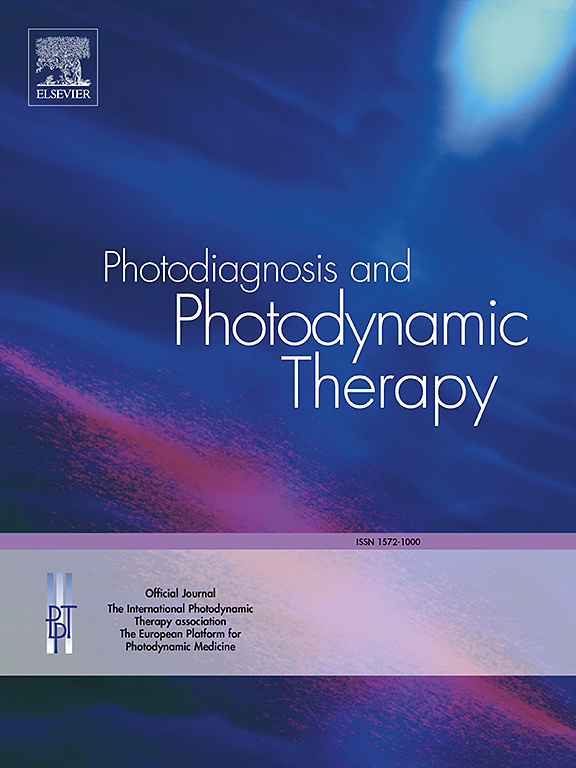新辅助支气管镜光动力治疗促进两例中央气道神经内分泌肿瘤患者保留气道和实质的肺叶切除术:以患者为中心的方法。
IF 3.1
3区 医学
Q2 ONCOLOGY
引用次数: 0
摘要
背景:NCCN指南推荐对出现在肺部的分化良好的肺神经内分泌肿瘤(NETs)(也称为类癌肿瘤)进行手术切除。幸运的是,除了肺叶切除术外,大多数肺部NETs不需要广泛的手术切除。我们报告了两例大肺NETs需要更广泛的手术切除的病例,包括隆突肺切除术和左下叶套筒切除术。然而,在考虑了患者的偏好后,新辅助光动力治疗能够减少总体肿瘤负荷,有助于气道和实质保留手术肺叶切除术。材料:介入肺科(IP)和心胸外科(CTS)与每位患者广泛讨论了选择方案,并制定了一项计划,如果随访支气管镜检查中有任何剩余NET,则进行新辅助支气管镜检查并手术切除。两例患者均以2mg/kg的剂量输注porfiimer钠(Photofrin®,Pinnacle Biologics)。根据标准方案,他们在输注后48小时接受了一系列支气管镜检查,其中支气管内NET用光纤导管照射,每次治疗剂量高达200J/cm。在初始照明支气管镜检查后,使用低温探针去除坏死肿瘤,并允许重复照明残余肿瘤。两名患者都接受了避免光毒性的广泛教育。结果:两例患者均接受了支气管镜随访,发现中央气道清除,亚节段水平仅残留NET。因此,两人都接受了肺叶切除术,避免了更广泛的手术切除。在随访4年和18个月时,两人均无疾病。两名患者都对他们的结果和他们在制定治疗计划时给予的自主权感到满意。结论:虽然光动力疗法已被证明是肺部NETs的一种有效的独立、新辅助和辅助治疗方法,但在某些患者中仍需要手术切除。我们提出了两个病例,其中理想的患者结果导致使用新辅助PDT来帮助促进气道和实质保留肺叶切除术,从而避免更广泛的手术切除和可能的长期发病率。本文章由计算机程序翻译,如有差异,请以英文原文为准。
Neoadjuvant bronchoscopic photodynamic therapy to facilitate airway and parenchymal sparing lobectomies in two patients with central airway neuroendocrine tumors: A patient centered approach
Background
NCCN guidelines recommend surgical resection for well differentiated pulmonary neuroendocrine tumors (NETs), also known as carcinoid tumors, when they present in the lungs. Fortunately, most pulmonary NETs will not require extensive surgical resection beyond a lobectomy. We report two cases in which large pulmonary NETs would have required more extensive surgical resection, including a carinal pneumonectomy and a left lower lobe sleeve resection. However, after taking patient's preferences into account, neoadjuvant photodynamic therapy was able to decrease the overall tumor burden helping to facilitate airway and parenchymal sparing surgical lobectomies.
Materials
Interventional pulmonology (IP) and Cardiothoracic surgery (CTS) discussed options extensively with each patient and formulated a plan to perform neoadjuvant bronchoscopic followed by surgical resection if there were any remaining NET on follow up bronchoscopy. Both patients received infusions of porfimer sodium (Photofrin ®, Pinnacle Biologics) at 2mg/kg. Per standard protocol, they each underwent a series of bronchoscopies 48 h after infusion, in which endobronchial NET was illuminated with a fiberoptic catheter delivering up to 200J/cm per treatment. After the initial illumination bronchoscopy, a cryo probe was used to debulk necrotic tumor and allow for repeat illumination of residual tumor. Both patients received extensive education on avoiding phototoxicity.
Outcomes
Both patients underwent follow up restaging bronchoscopies revealing cleared central airways and only residual NET at the subsegmental level. As such, both underwent lobectomies, avoiding more extensive surgical resection. Both are free of disease at four years and 18 months follow up, respectively. Both patients were satisfied with their outcomes and the autonomy they were given in formulating their treatment plan.
Conclusions
While photodynamic therapy has been shown to be an effective stand alone, neoadjuvant, and adjuvant therapy for pulmonary NETs, surgical resection is still required in select patients. We present two cases of in which desired patient outcomes led to the use of neoadjuvant PDT to help facilitate airway and parenchymal sparing lobectomies, thus avoiding more extensive surgical resection and possible long-term morbidity.
求助全文
通过发布文献求助,成功后即可免费获取论文全文。
去求助
来源期刊

Photodiagnosis and Photodynamic Therapy
ONCOLOGY-
CiteScore
5.80
自引率
24.20%
发文量
509
审稿时长
50 days
期刊介绍:
Photodiagnosis and Photodynamic Therapy is an international journal for the dissemination of scientific knowledge and clinical developments of Photodiagnosis and Photodynamic Therapy in all medical specialties. The journal publishes original articles, review articles, case presentations, "how-to-do-it" articles, Letters to the Editor, short communications and relevant images with short descriptions. All submitted material is subject to a strict peer-review process.
 求助内容:
求助内容: 应助结果提醒方式:
应助结果提醒方式:


